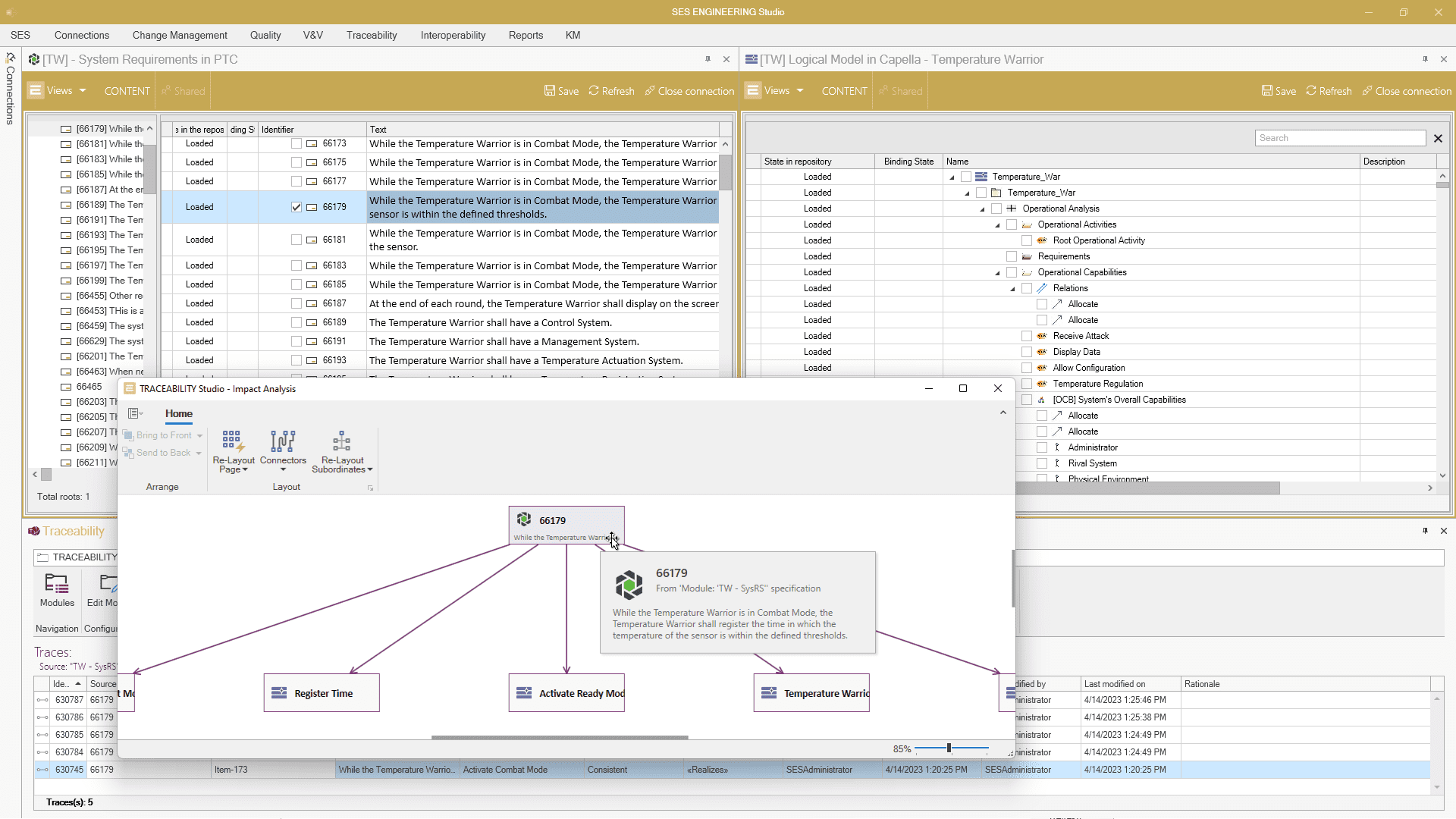PTC Windchill and SES ENGINEERING Studio
SES ENGINEERING Studio is a software framework enabling the realization of systems engineering based on reuse and with a knowledge-centric approach. It enables an organization to integrate already existing tools including PTC Windchill, and other solutions such as PTC Creo or Codebeamer ALM within a powerful life cycle management environment capable of running several technical management processes (Quality, Configuration Management, Verification and Validation, and Traceability).
PTC Windchill and quality management
For quality management, the connector to PTC Windchill allows you to define, measure, improve and manage the quality of your requirement specifications and other documents within the systems engineering life cycle. The REUSE Company offers a specialized version that connects with PTC Windchill: RQA – QUALITY Studio for Windchill.
RQA – QUALITY Studio for Windchill uses a wide set of metrics based on the INCOSE Guide to Writing Requirements to assess the quality of a requirement specification in a three-dimensional approach: Correctness, Consistency, and Completeness (CCC). While correctness metrics are assessing the quality of individual requirements/risks/tests, consistency and completeness metrics process the whole specification. Consistency metrics help find similar requirements, property, and measurement unity inconsistencies, and completeness metrics are designed to check how well the system of interest is being covered in the specification. Users can assess quality using the default configuration or set up their own quality configuration, and assessment results can be exported into automatically generated reports available in various file extension formats.
PTC Windchill and requirements traceability
Traceability is a key activity in every project, it does not matter if you are developing software products, critical system products, or following frameworks such as the ARP4754… whatever project requires traceability to demonstrate completeness in terms of the proper coverage of all the high-level needs, as well as coverage to demonstrate that all the requirements of the system have been properly linked to test scenarios to verify the system.
SES ENGINEERING Studio has introduced the notion of a Synchronized Source of Truth (SSoT) and the Interoperability HUB. And PTC tools such as PTC Windchill, PTC Integrity, and PTC Creo represent an integral part of this interoperability schema:

Once any given tool takes part in the Interoperability HUB, the HUB allows any engineer the possibility to trace requirements, risks, tests… in PTC Windchill or PTC Integrity, model elements in PTC Creo… with other items managed any other tools also connected to the HUB (requirements, risks, conceptual model elements, physical models, tests, bugs, source code…). The Interoperability HUB implemented by SES ENGINEERING Studio is a nice way to destroy silos and interconnect tools in heterogeneous environments, thus keeping digital continuity regardless of the different tools involved.
Traces are generated from within the SES ENGINEERING Studio user interface, without the need for even opening the source tools, copying IDs, including regular expressions here and there… A new trace is created by selecting the source and target elements in SES ENGINEERING Studio, and just clicking a button.

Furthermore, the principle of the Synchronized Source of Truth keeps engineers always updated about any possible change done in the source (the Authoritative Source of Truth). When the SES ENGINEERING Studio detects a change in the source, the element is shown as updated, the engineer can easily see the changes from the current content in the source and the last time the element was represented in the HUB, and the potential traces from/to this element shall be identified as suspicious until the engineer decides what to do with the change.
